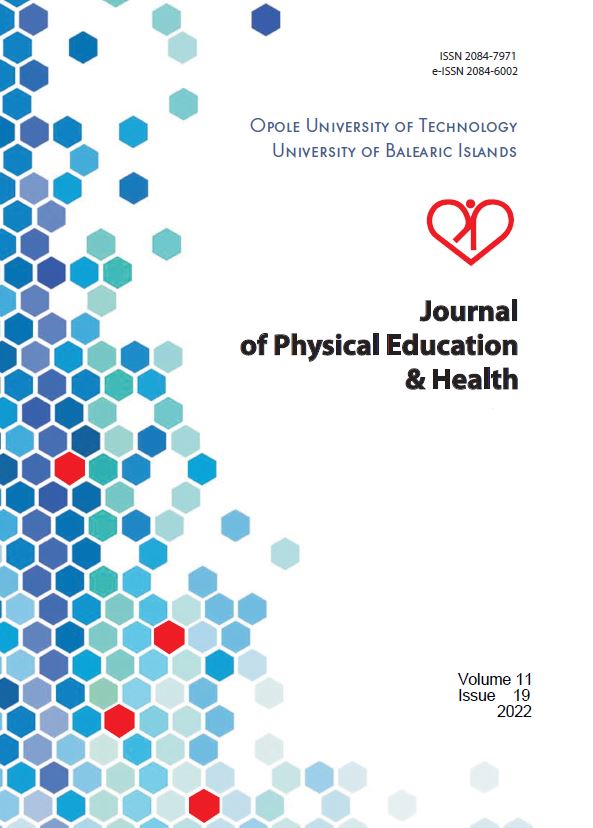Abstract
Neck circumference (NC) is a marker of upper body subcutaneous adipose tissue distribution. Although it is commonly used in many parts of the world it appears to lack reference values as an indicator of metabolic and cardiovascular risk in the Nigerian population. A total of 2000 apparently healthy adults participated in this study. NC was measured using a non-stretchable tape between the mid-cervical spine and mid-anterior neck of each participant standing upright. In men the NC was measured just below the laryngeal prominence (Adam’s apple). Data was summarized using descriptive and inferential statistics. The alpha level was set at 0.05. The Nigerian men under study had significantly higher NC values than the women (t = 36.986, p = 0.001). The mean values for men and women below 20 years, between 21 and 30 years, 31 and 40 years, 41 and 50 years, and 51 and 60 years old were 37.29 ± 1.96 cm and 32.45 ± 1.84 cm, 37.69 ± 2.16 cm and 33.12 ± 2.52 cm, 37.67 ± 2.25 cm and 32.46 ± 2.24 cm, 38.01 ± 2.49 cm and 33.36 ± 2.67 cm, and 37.59 ± 2.29 cm and 33.14 ± 1.78 cm, respectively. The 95 percentile values for men and women younger than 20 years, 31-40 years, 41-50 years, and 51-60 years were 41cm and 36 cm, 42 cm and 38 cm, 41cm and 37 cm, 43 cm and 39 cm, and 42 cm and 37 cm, respectively. Based on age-and-sex neck circumference reference values, the means and percentiles can be used as indicators of acceptable and abnormal NC values for Nigerian adults between the ages of 18 to 60 years.
References
Ben-Noun L., Laor A., Sohar E. Neck circumference as a simple screening measure for identifying overweight and obese patients. Obesity Research 2001; 9(8): 470–477.
Ben-Noun L., Laor A. Relationship between changes in neck circumference and cardiovascular risk factors. Obesity Research 2003; 11(2): 226–331.
Davies R. J., Ali N. J., Stradling J. R. Neck circumference and other clinical features in the diagnosis of obstructive sleep apnea syndrome. Thorax 1992; 47(2): 101–105.
Li H-X., Zhang F., Zhao D. Neck circumference as a measure of neck fat and abdominal visceral fat in Chinese adults. BMC Public Health 2014; 14(1): 311.
Onat A., Hergenϛ G., Yϋksel H., Can G., Ayhan E., Kaya Z., Dursunoḡlu D. Neck circumference as a measure of central obesity: associations with metabolic syndrome and obstructive sleep apnea syndrome beyond waist circumference. Clinical Nutrition 2009; 28(1): 46–51.
Plywaczewski R., Bielen P., Bednarek M., Jonczak L., Gόrecka D., Sliwinski P. Influence of neck circumference and body mass index on obstructive sleep apnea severity in males. Pneumonologia i Alergologia Polska 2008; 76(5): 313–320.
Sharma S. K., Kurian S., Malik V. A stepped approach for prediction of obstructive sleep apnea in overtly asymptomatic obese subjects: a hospital-based study. Sleep Medicine 2004; 5: 509–514.
Dixon J. B., O’Brien P. E. Neck circumference a good predictor of raised insulin and free androgen index in obese and premenopausal women: changes with weight loss. Clinical Endocrinology 2002; 57(6): 769–778.
Chaitanya P. Neck circumference: A novel anthropometric tool for screening obesity in adults. International Journal of Collaborative Research on Internal Medicine & Public Health 2017; 9(7): 25.
Kissebah A. H., Vydelingu N., Murray R., Evans D. J., Harts A. J., Kalkhoff R. K. Relation of body fat distribution to metabolic complications of obesity. The Journal of Clinical Endocrinology & Metabolism 1982; 54: 254–260.
Vallianou N. G., Evangelopoulos A. A., Bountziouka V., Vogiatzakis E. D., Bonou M. S., Barbetseas J., Avgerinos P. C., Panagiotakos D. B. Neck circumference is correlated with triglycerides and inversely related with HDL cholesterol beyond BMI and waist circumference. Diabetes/Metabolism Research and Reviews 2013; 29: 90–97.
Preis S. R., Massaro J. M., Hoffman U. Neck circumference as a novel measure of cardiometabolic risk: The Framingham Heart Study. The Journal of Clinical Endocrinology and Metabolism 2010; 9(8): 3701–3710.
Eastwood S. V., Tillin T., Dehbi H. M., Wright A., Forouhi N. G., Godsland I., Whincup P., Sattar N., Hughes A. D., Chaturvedi N. Ethnic differences in associations between fat deposition and incident diabetes and underlying mechanisms: the SABRE study. Obesity 2015; 23(3): 699–706.
Cochran W. G. Sampling Techniques (Third ed.). New York: Wiley&Sons, 1977.
Lohman T. G., Roche A. F., Martorell R. Anthropometric Standardization Reference Manual Textbook. Champaign, IL: Human Kinetics Books, 1988: 41–47.
Ojoawo A. O., Akinola O. T., Abuila O. B., Arayombo B. E. Selected body circumferences and cardiovascular parameters among a Nigerian community. International Journal of Medical Reviews and Case Reports 2020; 4(12): 8–15.
Oluremi A. F., Makenzie L. B., Sarah E. C. Neck circumference positively relates to cardiovascular risk factor in college students. International Journal of Environmental Research and Public Health 2018; 15: 1480.
Ferretti Rde L., Cintra Ide P., Passos M. A., de Moraes Ferrari G. L., Fisberg M. Elevated neck circumference and associated factors in adolescents. BMC Public Health 2015; 15: 208.
Sjostrom C. D., Hakangard A. C., Lissner L., Sjostrom L. Body compartment and subcutaneous adipose distribution - risk factor patterns in obese subjects. Obesity Research 1995; 3(1): 9–22.
Cizza G., de Jonge L., Piaggi P., Mattingly M., Zhao X., Lucassen E., Rother K. I., Sumner A. E., Csako G., NIDDK Sleep Extension Study. Neck circumference is a predictor of metabolic syndrome and obstructive sleep apnea in short-sleeping obese men and women. Metabolic Syndrome and Related Disorders 2014; 12(4): 231–241.
Hingorjo M. R., Qureshi M. A., Mehdi A. Neck circumference as a useful marker of obesity: A comparison with body mass index and waist circumference. The Journal of the Pakistan Medical Association 2012; 62(1): 36–40.
Joshipura K., Muñoz-Torres F., Vergara J., Palacios C., Pérez C. M. Neck Circumference may be a better alternative to standard anthropometric measures. Journal of Diabetes Research 2016: 6058916.
Laakso M., Matilainen V., Keinänen-Kiukaanniemi S. Association of neck circumference with insulin resistance-related factors. International Journal of Obesity and Related Metabolic Disorders 2002; 26(6): 873–875.

This work is licensed under a Creative Commons Attribution-ShareAlike 4.0 International License.
Copyright (c) 2022 Array


